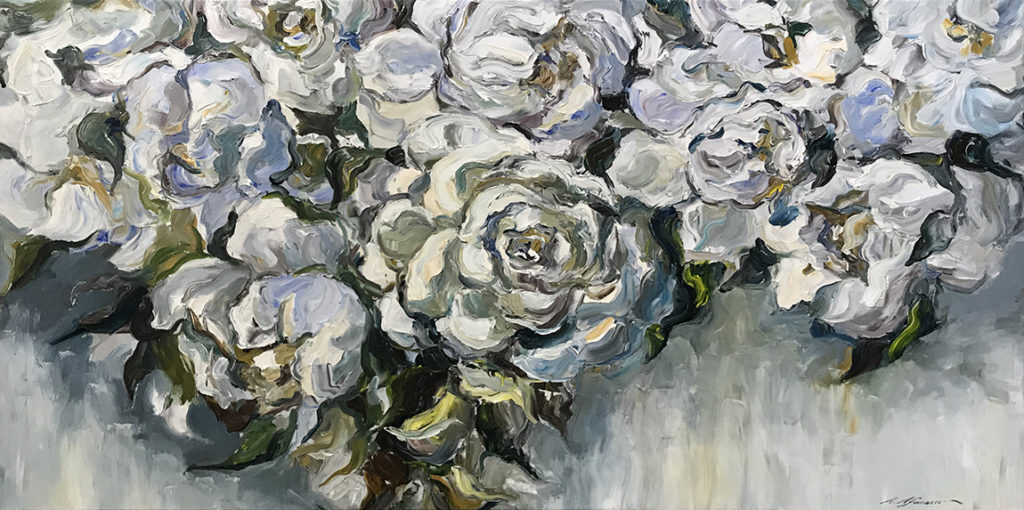
The Floral Still Life
Published June 26th, 2018
In this month’s exhibition we’re celebrating flowers and their appearance in various artwork styles from traditional to contemporary. The roots of this subject matter, so to speak, lie within the still life.
The still life grew in popularity, especially in northern Europe, during the 17th century. The intention of the still life at this time was to teach a moral lesson. This was to remind the viewer of the transience of life. Each bloom was imbued with a personal, cultural, or even religious significance. Wilting flowers reminded the viewer of mortal life, lilies indicated the Virgin Mary, and pink roses signified love, etc. Despite their beauty and significance, “floral still life” as a subject matter remained at the bottom of the painting hierarchy, trailing far behind grandiose history paintings.
“ . . . Even if the painter of flowers need not make the same studies to make or conquer the same difficulties as the history painter, does that mean flower painting is a lower or more limited genre?”—a review of the 1817 Salon
In the 19th century, French realists and impressionists alike began to move away from painting still lives as Memento Mori/Vanitas artworks and began to paint scenes of everyday life –their objects and subjects –for their own sake. This shift was very unpopular; the painting was no longer edifying –just beautiful. Can you imagine a time when the impressionist “still life” was considered “modern” and ruffled the feathers of traditionalists? To best appreciate this genre, it’s important to understand that even the simplest subject matter faced criticism.
“(The) poor fabricators of still lifes, who have been so violently disbarred just when they least expected it . . . [T]hey are multiplying at an alarming rate. The rats in the Paris sewers are less numerous and less menacing. If the academic order ever crumbles, it will be because the still-life painters, down below, have gnawed away, one by one, at its foundations.”—Critic Jules Castagnary, writing about the Salon des refusés in 1863
Here are some quotations from the floral artists from the 1800s to help give some context to this genre (and perhaps redeem the critics’ harsh reviews with some romanticism). Enjoy this behind-the-scenes glimpse of still lifes and their hidden roots!
- “I am following nature without being able to grasp her, I perhaps owe having become a painter to flowers.” – Claude Monet
- “I must have flowers, always, and always.” – Claude Monet
- “A painter can say all he wants to with fruit or flowers or even clouds.” – Edouard Manet
- “How right it is to love flowers and the greenery of pines and ivy and hawthorn hedges; they have been with us from the very beginning.” – Vincent Van Gough
- “I am working at it every morning from sunrise on, for the flowers fade so soon, and the thing is to do the whole in one rush.” – Vincent Van Gough
- “What seems to me to be one of the most important things about our movement is that we have freed painting from the tyranny of subject-matter. I am free to paint flowers and call them flowers, without having to weave a story round them.” – Pierre Auguste Renoir
- ” . . . I think that nothing is more difficult for a true painter than to paint a rose, since before he can do so, he has first to forget all the roses that were ever painted.” – Henri Matisse


